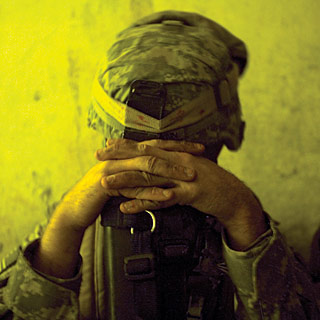 Massage, music and exercise as therapeutic methods for treating mental illness can be traced back to the Greeks, but only in the early 20th century was occupational therapy widely accepted as a legitimate healthcare profession. Modern OT practices can be traced to World War I and treatment of injured combatants, many suffering “shellshock”, what is now called PTSD. From 1917-1920 there was significant demand for “reconstruction aides” to rehabilitate these injured. Many of the aides were women trying to do their patriotic duty, with little or no mental health training. The dearth in skilled personnel accelerated the professionalization of the field, codification of its practices and establishment of nationwide network of training programs. By the end of the 1920s, the groundwork had been laid for occupational therapy as we know it.
Massage, music and exercise as therapeutic methods for treating mental illness can be traced back to the Greeks, but only in the early 20th century was occupational therapy widely accepted as a legitimate healthcare profession. Modern OT practices can be traced to World War I and treatment of injured combatants, many suffering “shellshock”, what is now called PTSD. From 1917-1920 there was significant demand for “reconstruction aides” to rehabilitate these injured. Many of the aides were women trying to do their patriotic duty, with little or no mental health training. The dearth in skilled personnel accelerated the professionalization of the field, codification of its practices and establishment of nationwide network of training programs. By the end of the 1920s, the groundwork had been laid for occupational therapy as we know it.
To this day, PTSD remains an important OT specialization in both civilian and military sectors. Increasing numbers, as high as 20% by some estimates, of deployed soldiers and returning veterans of the wars in Iraq and Afghanistan, both male and female, are being diagnosed with the syndrome. There are 17 officially recognized symptoms of PTSD, which fall into 3 broad categories:
- Re-experiencing: nightmares and flashbacks
- Avoidance: isolation and emotional numbing
- Hyper-arousal: insomnia and outbursts of anger
PTSD affects the physical and emotional well-being not only of the victims, but their loved ones as well. It is well-documented that sufferers have higher incidences of drug and alcohol abuse, as well as a higher rate of divorce and other family issues than in the general population.
Of growing interest to the DOD, the VA and others, is the direct correlation between PTSD and a significant annual uptick in driving-related issues among service men and women. USAA, a leading insurer of active duty troops, reports that auto accidents involving a deployed service member are up 13%. In addition to DUIs and drug-related accidents, PTSD manifests in this population as aggressive driving and road rage, or the opposite, very defensive driving and extreme caution. Soldiers and veterans may suffer severe anxiety attacks and/or hypervigilance, resulting in unusual driving strategies such as straddling lanes. Given the modern driving distractions of civilian life, such as texting, hypervigilance on the part of drivers might be a positive. The problem for the PTSD sufferer is when they cross the fine line between real and imagined dangers and it affects their driving habits and perceptions.
Studies show that OT is particularly effective in providing PTSD victims with the coping and management skills needed to conduct their daily activities, and driving is no exception. There are a myriad of PTSD videos, audio tape programs and smartphone apps available to service personnel and their families. As yet, OTs have fewer clinician-grade tools at their disposal, but can integrate many of these self-help formats into their treatment programs. OTs should check out the reference app ”Co-Occurring Conditions Toolkit” from The National Center for Telehealth and Technology, as well as the their “Life Armor” app which provides support and practical tools for patients. Both apps are free and specifically designed for military personnel.
Many innovations in evaluation and treatment of PTSD are the product of DOD and VA research and development in collaboration therapists, engineers and scientists. Though currently being tested in military and VA clinics, presumably in the near future advances will be available to the general public on a broader scale. Simulators, such as the ones developed by DriveSafety, show particular promise for resolving PTSD related driving issues. These machines reproduce a variety of driving scenarios and exercises and are designed to target specific skills for patients with functional losses. The more that OTs can improve functionality in their patients’ living skills, including driving, the more rapid they can effect patient integration back into civilian life and start them on the road to full recovery.
If you are an OT looking to make a difference in the lives of PTSD patients or interested in exploring new and exciting challenges in your field, contact Centra at 800 535 0076 and let us help you achieve your goal.